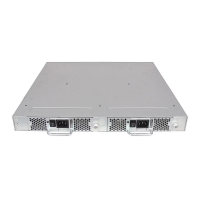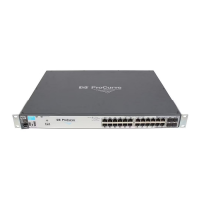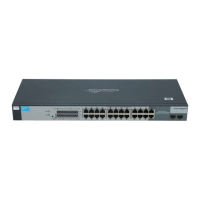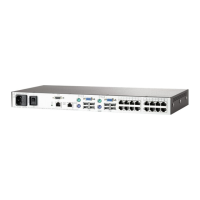458 Fabric OS Administrator’s Guide
53-1002446-01
Buffer credit management
23
payloads consistently being 2,112 bytes is not realistic in practice. To gain the proper number of BB
credits using the LS mode, there must be enough BB credits available in the pool because
Fabric OS will check before accepting a value.
The portCfgLongDistance command’s desired_distance parameter is the upper limit of the link
distance and is used to calculate buffer availability for other ports in the same port group. When the
measured distance exceeds the value of desired_distance, this value is used to allocate the buffers.
In this case, the port operates in degraded mode instead of being disabled due to insufficient
buffers. In LS mode, the actual link distance is not measured; instead, the desired_distance value
is used to allocate the buffers required for the port.
Refer to the data in Table 79 on page 461 and Table 80 on page 462 to get the total ports in a
switch or blade, number of user ports in a port group, and the unreserved buffer credits available
per port group. The values reflect an estimate, and may differ from the supported values in
Table 80.
1. Determine the desired distance in kilometers of the switch-to-switch connection. This example
uses 50 km.
2. Determine the speed that you will use for the long-distance connection. This example uses 2
Gbps.
3. Use one of the following formulas to calculate the reserved buffers for distance:
• If QoS is enabled:
(Reserved Buffer for Distance Y) = (X * LinkSpeed / 2) + 6 + 14
• If QoS is not enabled:
(Reserved Buffer for Distance Y) = (X * LinkSpeed / 2) + 6
Where:
X = the distance determined in step 1 (in kilometers).
LinkSpeed = the speed of the link determined in step 2.
6 = the number of buffer credits reserved for Fabric Services, Multicast, and Broadcast
traffic. This is a static number.
14=the number of buffer credits reserved for QoS. This is a static number.
Based on the answers provided in steps 1 and 2, insert the numbers into the formula. The
formula should read as follows:
(50 km * 2 Gbps / 2) + 6 = 56 buffers, which is the number of buffers reserved for distance
Below are additional examples using different speeds all based on a distance of 50 km. The
distances and speeds are variables that can change based on how your network is set up:
• If you have a distance of 50 km at 1 Gbps then, (50 km * 1 Gbps / 2) + 6 = 31 buffers
• If you have a distance of 50 km at 2 Gbps then, (50 km * 2 Gbps / 2) + 6 = 56 buffers
• If you have a distance of 50 km at 4 Gbps then, (50 km * 4 Gbps / 2) + 6 = 106 buffers
• If you have a distance of 50 km at 8 Gbps then, (50 km * 8 Gbps / 2) + 6 = 206 buffers
• If you have a distance of 50 km at 10 Gbps then, (50 km * 10 Gbps / 2) +6 = 256 buffers
• If you have a distance of 50 km at 16 Gbps then, (50 km * 16 Gbps / 2) + 6 = 406 buffers

